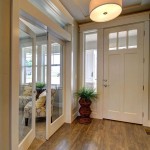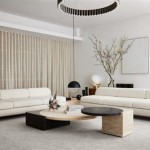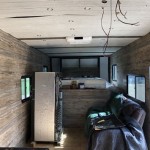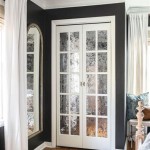Average Cost Of Interior Painting Per Sq Ft 2024
Understanding the costs associated with interior painting projects is crucial for homeowners planning renovations or simply refreshing their living spaces in 2024. A primary metric used to estimate these costs is the price per square foot. This figure provides a baseline for budgeting, but it's essential to recognize that various factors influence the ultimate expense of an interior painting job.
The cost per square foot for interior painting typically encompasses several components: labor, paint, and sometimes, additional materials or services like priming, patching, or wall cleaning. The relative weight of each component varies depending on the specific requirements of the project, the quality of materials selected, and the experience level of the painting contractor. Furthermore, regional differences in labor costs and material availability can also significantly impact the overall price.
For 2024, homeowners can expect the average cost of interior painting to range from $2 to $6 per square foot. This figure represents a broad estimate, and it should be viewed as a starting point for project planning rather than a definitive price. The actual cost will likely differ based on the specific details of the project, and obtaining multiple quotes from painting contractors is highly recommended to secure the most accurate estimate.
Factors Influencing the Cost Per Square Foot
Several key factors contribute to the variability in interior painting costs. A thorough understanding of these factors enables homeowners to more accurately assess the potential expenses and make informed decisions about their painting projects.
1. Surface Preparation: The condition of the walls to be painted plays a significant role in determining the cost. Walls that are in good condition, requiring minimal patching or cleaning, will naturally result in a lower cost per square foot compared to walls with extensive damage, such as cracks, holes, or peeling paint. Surface preparation can include tasks like filling holes with spackle, sanding rough areas, removing wallpaper, and thoroughly cleaning the walls to ensure proper paint adhesion. Some contractors charge separately for extensive prep work, increasing the overall project cost. Failing to adequately prepare the surface can lead to an inferior paint job, potentially requiring rework and additional expenses in the future.
2. Paint Quality and Type: The type and quality of paint selected will also affect the cost per square foot. Higher-quality paints, while more expensive upfront, typically offer better coverage, durability, and longevity. They often require fewer coats, potentially offsetting the initial cost difference. Certain paint types, such as those with specialized finishes (e.g., matte, eggshell, satin, semi-gloss, high-gloss) or those designed for specific purposes (e.g., moisture-resistant for bathrooms, stain-resistant for kitchens), may also command a higher price. The number of coats of paint required also factors into the materials cost, as some colors or wall conditions require additional coats for adequate coverage. A cheaper paint might need three, four, or even five coats which will also increase labor costs.
3. Labor Costs: Labor costs constitute a significant portion of the overall painting expense. These costs can vary widely depending on the geographic location, the experience level of the painting contractor, and the complexity of the job. Highly experienced contractors with a proven track record may charge more per hour or per square foot, but their expertise can ensure a high-quality finish and efficient project completion. Some contractors charge by the hour, while others provide a fixed price per square foot. It is essential to obtain detailed quotes from multiple contractors, clearly outlining the scope of work and the associated costs, to make an informed decision. The complexity of the job, such as painting high ceilings, intricate trim work, or hard-to-reach areas, can also influence labor costs.
Regional Variations in Painting Costs
The cost of interior painting can vary considerably based on geographic location. Factors such as the local cost of living, the availability of qualified painting contractors, and regional demand for painting services all contribute to these variations.
In areas with a higher cost of living, such as major metropolitan cities, labor costs and material prices tend to be higher. Similarly, in regions with a limited number of experienced painting contractors, the demand for their services can drive up prices. Seasonal factors can also play a role, with painting contractors potentially charging more during peak seasons when demand is higher.
To obtain an accurate estimate of interior painting costs in a specific region, it is crucial to consult with local painting contractors and obtain multiple quotes. Online resources and cost estimators can provide a general idea of the average costs in a particular area, but these should be considered as rough estimates only. Local contractors possess the most up-to-date knowledge of regional pricing and can provide more precise quotes based on the specific project requirements.
Breaking Down the Cost Components
To better understand the overall cost of interior painting per square foot, it's helpful to examine the approximate breakdown of expenses:
Labor: Labor typically accounts for 60% to 80% of the total cost of interior painting. This includes the time spent on surface preparation, painting, and cleanup. The complexity of the project, the height of the ceilings, and the amount of trim work can all influence the labor costs.
Paint: The cost of paint typically represents 20% to 40% of the overall expense. As mentioned earlier, the quality and type of paint selected can significantly impact this component. Choosing a higher-quality paint may result in a higher upfront cost, but it can also save money in the long run by requiring fewer coats and providing better durability.
Materials and Supplies: This category includes items such as primer, brushes, rollers, tape, drop cloths, sandpaper, and spackle. The cost of these materials is typically a smaller percentage of the overall expense compared to labor and paint. However, it is essential to factor in these costs when budgeting for the project. Some contractors will bundle these costs into their labor quote, while others will itemize them separately.
It's important to note that these percentages are approximate and can vary depending on the specific project. Obtaining a detailed quote from a painting contractor will provide a clearer breakdown of the cost components.
Additional Cost Considerations
Beyond the core factors of surface preparation, paint quality, and labor costs, several other considerations can impact the overall expense of interior painting.
Moving Furniture: If the homeowner is unable to move furniture and other belongings out of the painting area, the painting contractor may charge an additional fee for this service. This can add to the overall labor costs. It's generally more cost-effective for the homeowner to move as much furniture as possible prior to the start of the project.
Repairs: If the walls require significant repairs beyond basic patching, such as drywall repair or plastering, this will add to the project cost. These repairs may need to be performed by a specialist, further increasing expenses. Addressing these issues before painting is crucial to ensure a smooth and durable finish.
Permits: In some jurisdictions, a permit may be required for interior painting projects, especially if the work involves structural alterations or the use of certain paint types. The cost of obtaining a permit should be factored into the overall project budget. It's important to check with the local building codes to determine if a permit is necessary.
Special Finishes: Applying specialized finishes, such as faux finishes, textures, or decorative painting techniques, will significantly increase the cost per square foot. These techniques require specialized skills and materials, and the labor costs are typically higher than for standard painting. If considering special finishes, it's essential to consult with a painting contractor experienced in these techniques and obtain a detailed quote.
By carefully considering these additional cost factors, homeowners can develop a more comprehensive and accurate budget for their interior painting projects.
Tips for Saving Money on Interior Painting
While professional interior painting offers numerous benefits, there are several ways homeowners can potentially reduce the overall cost without compromising on quality.
Prepare the Walls Yourself: A significant portion of the labor cost is dedicated to surface preparation. Homeowners can save money by handling some or all of this work themselves. This can include tasks like cleaning the walls, patching small holes, and removing wallpaper. However, it's crucial to ensure that the surface preparation is done correctly, as poor preparation can lead to an inferior paint job.
Buy Your Own Paint: While some contractors offer discounts on paint, homeowners may be able to find better deals by purchasing the paint themselves. Research different brands and retailers to find the best prices. Be sure to consult with the painting contractor regarding the type and quality of paint recommended for the project. Buying in bulk can also lead to cost savings, especially for larger projects.
Consider Painting Off-Season: Painting contractors may offer lower prices during off-peak seasons when demand is lower. This can be a good opportunity to save money on labor costs. However, be aware that weather conditions can sometimes affect the painting process, so it's important to choose a suitable time of year.
Obtain Multiple Quotes: Always obtain quotes from multiple painting contractors before making a decision. This allows homeowners to compare prices and services and choose the contractor that best meets their needs and budget. Be sure to carefully review the quotes and ask questions about any discrepancies or unclear items. Don't automatically choose the lowest bid, as this could indicate lower quality materials or workmanship. Look for a balance between price and quality.
Choose Simpler Finishes: Choosing a standard paint finish, such as eggshell or satin, will typically be less expensive than opting for specialized finishes or decorative techniques. Simpler finishes are also easier to maintain and touch up over time.
By implementing these cost-saving strategies, homeowners can potentially reduce the overall expense of their interior painting projects without sacrificing quality.
In conclusion, the average cost of interior painting per square foot in 2024 is a complex figure influenced by a multitude of factors. Understanding these factors and carefully planning the project can help homeowners budget effectively and achieve the desired results within their financial constraints. Thorough research, careful planning, and obtaining multiple quotes are essential steps in ensuring a successful and cost-effective interior painting project.

Cost To Paint The Interior Of A House In 2024

Cost Of Painting Your Home Per Sq Ft In 2024 Detailed Guide

How Much Does It Cost To Paint The Interior Of A House In Paintrite Pros

Interior Painting Costs Per Square Foot Home Painters Toronto

Today Painting Work Cost Of For House 2024 Interior Primer

How Much Does It Cost To Paint The Interior Of A House In Paintrite Pros

Interior Painting Cost Per Square Foot Home Painters Toronto

Cost To Paint A House Whole Painting Fixr

Interior Painting Costs Per Square Foot Home Painters Toronto

Interior Painting Costs Per Square Foot Home Painters Toronto
Related Posts








